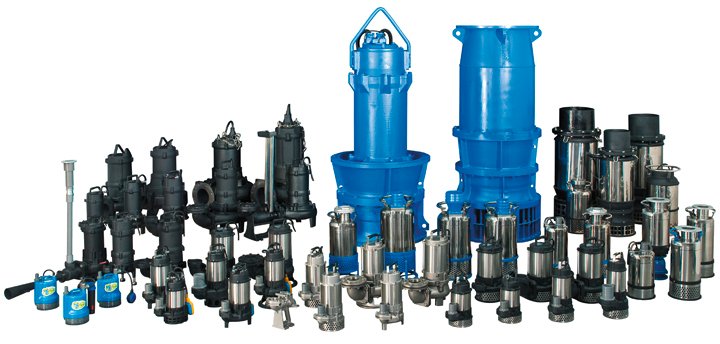Submersible pumps provide a powerful solution when high heads or high lifts are required at some job sites. The submersible pump end also enables the pump to work in deep excavations, manholes, open pits, quarries or mines.
A hydraulic submersible pump set comprises of a hydraulic power unit and a submersible trash pump. The hydraulic power unit is equipped with a hydraulic pump. This is powered by a diesel engine or an electric motor, a hydraulic oil reservoir, and three connections for hydraulic hose.
Why Choose a Hydraulic Submersible Pump Set?
Contractors, public works operators and mining operations prefer hydraulic submersible pumps instead of suction lift pumps because the former are capable of high lifts. They work best in applications such as dewatering gravel pits, mines, quarries, trenches and pipelines.
Hydraulic submersible pumps can also handle viscous liquids—such as sewage, sludge, slurries or muddy water—without suction-line clogging problems that occur in suction pumps. The presence of a variable engine speed allows for different flow rates and heads in deep applications.
Another advantage of the hydraulic submersible pump is how the power unit is accessible for servicing and fueling even while the submersible pump end remains in the source.
Additionally, the maximum recommended hydraulic hose length for connecting the power unit and the pump end is 100 feet. It is also advisable to consult the pump manufacturer’s applied products department if additional hose length is required.
Barrel floats prolong the life of the submersible pump by working like pontoons and keeping the pump end submerged without its touching the bottom. This prevents dredging, which can damage the impeller and other rotating components.
A barrel float also protects the pump from large solids and locks the pump in place. This prevents excessive movement, which will cause damage to the pump and associated piping.
The installation of an automatic start-stop system to a hydraulic pump set simplifies operation. This, in turn, minimizes labor costs. This is because generally, hydraulic power units need manual start and stop, needle valve and speed adjustment.
As such, an automatic start-stop system would allow for considerable fuel savings. It also allows the engine to warm up and cool down with ultimate precision.







